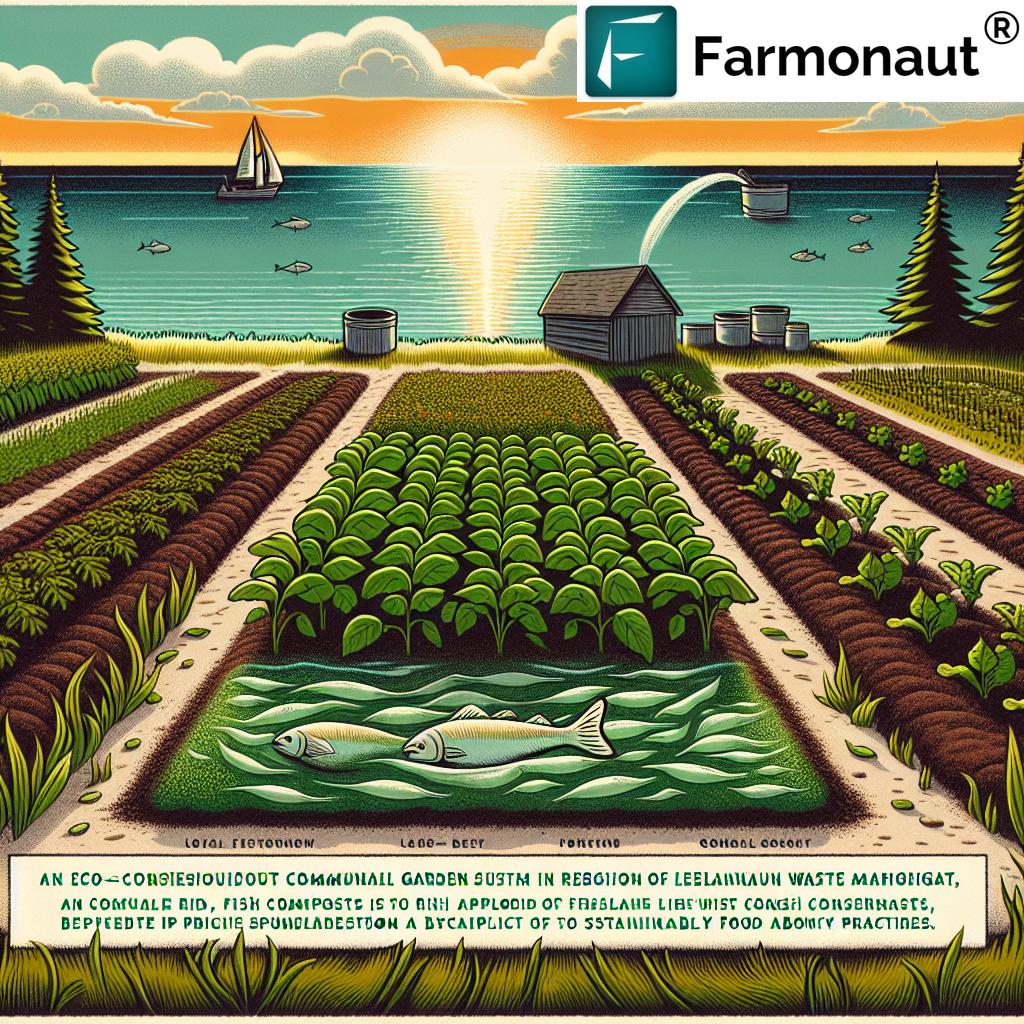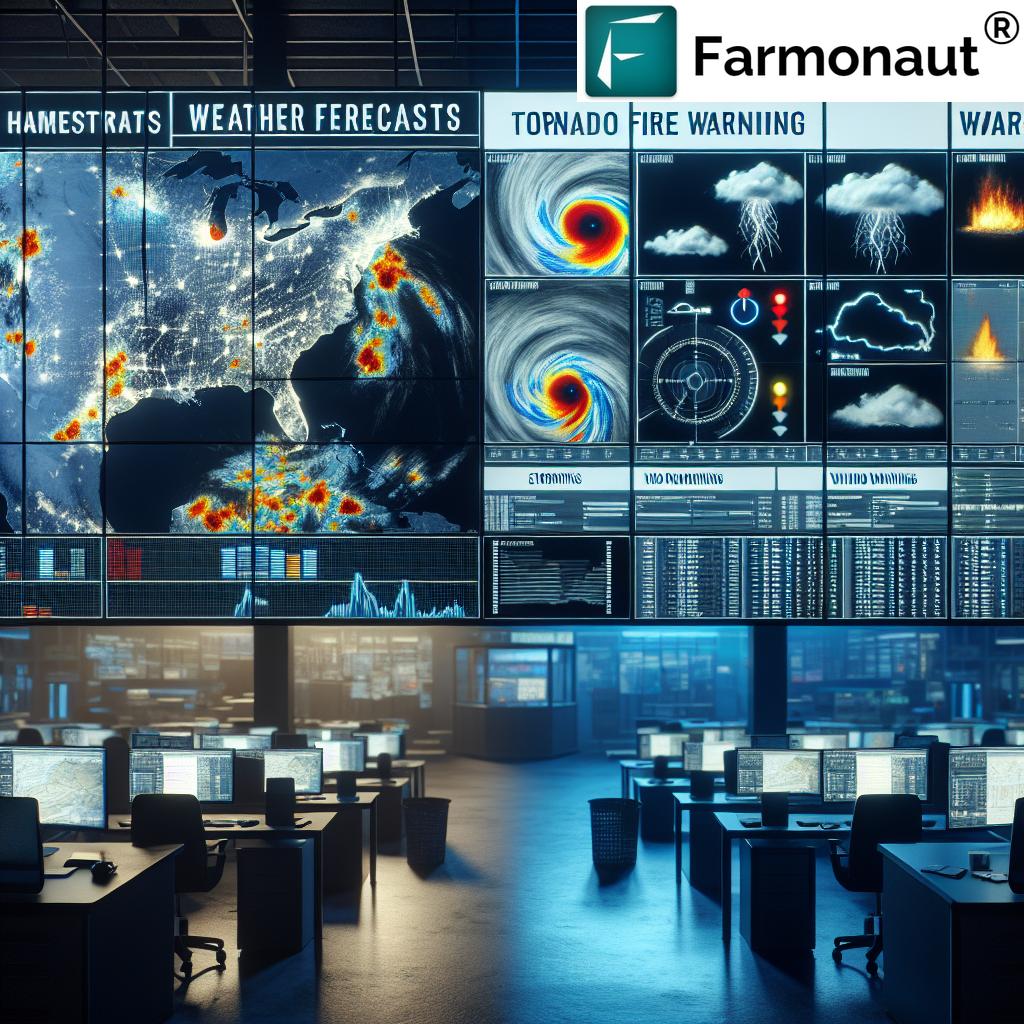Rhapis Palm USDA APHIS Inspection: 2026 Guide
Meta Description: Explore how USDA APHIS inspections safeguard Rhapis palm, Acai palm, and other small palm trees in 2026, ensuring sustainable trade, robust pest management, and ecological biosecurity.
“USDA APHIS inspections helped reduce palm pest interceptions by 35% between 2020 and 2024, protecting global palm trade routes.”
Table of Contents
- Introduction: Why Rhapis Palm Biosecurity Matters in 2026
- The Importance of Rhapis Palm, Acai Palm, and Small Palm Trees
- USDA APHIS Inspection: Role in Plant Health, Trade & Sustainability
- USDA APHIS Inspection Checklist & Impact Table
- Pest Management and Biosecurity for Small Palm Trees
- From Nursery to Landscape: APHIS Inspection Protocols Explained
- Trade Integrity and Sustainable Palm Tree Exports
- Farmonaut: Satellite-Driven Insights for Sustainable Palm Cultivation
- Looking Forward: The Future of Palm Tree Biosecurity in 2026 and Beyond
- Frequently Asked Questions (FAQ)
- Conclusion
Introduction: Why Rhapis Palm Biosecurity Matters in 2026
The Rhapis palm, also known as the Lady Palm, alongside the Acai palm and Canary palm, occupy a special place in global horticulture and landscaping. Their distinctive traits—aesthetic charm, compact stature, and versatility for indoor and outdoor spaces—fuel their surging popularity in urban agriculture, commercial landscape projects, and tree restoration efforts.
However, as the trade and movement of these small palm trees continue to expand, so do the risks associated with pest and disease spread. The stakes for economic stability, environmental health, and sustainable trade have never been higher.
This is where the United States Department of Agriculture’s Animal and Plant Health Inspection Service (USDA APHIS) assumes its critical role as the nation’s gatekeeper. Through a comprehensive USDA APHIS inspection framework, palm imports and exports are meticulously monitored for signs of invasive species, quarantine-relevant pests, and any biological threats to American agriculture and forestry.
In this guide, we will:
- Demystify the APHIS inspection process for rhapis palm, acai palm, and canary palm
- Highlight how these inspections safeguard trade integrity and ecological health
- Explore innovations—including satellite tech—that support sustainability, biosecurity, and pest management
- Offer a forward-looking perspective on maintaining resilient palm tree management into 2026 and beyond
The Importance of Rhapis Palm, Acai Palm, and Small Palm Trees in Agriculture, Forestry & Environment
Rhapis Palm: The Adaptable Lady Palm
Rhapis palm, commonly known as the Lady Palm, stands out among small palm trees due to its compact size, lush evergreen foliage, and impressive tolerance for shade. Its popularity in indoor and outdoor landscaping has made it an ideal choice for urban greening projects and forestry restoration.
Homeowners, landscapers, and urban planners value this palm for numerous reasons:
- Aesthetic value—creates tropical, elegant settings indoors and outdoors
- Low maintenance—thrives in low light, resists drought, and copes with diverse soils
- Ecological contributions—supports microclimate regulation, humidity, and biodiversity in urban spaces
- Habitat improvement—offers shelter and support for native species
Acai Palm and Canary Palm: Dual Value in Trade and Ecology
While acai palm has risen in significance due to its nutritious berries that support smallholder farmers—especially in tropical regions like Brazil—the canary palm (Phoenix canariensis) is renowned for its majestic visual appeal in commercial and civic landscapes. Both have dual ventures:
- Acai palm: agricultural (berry production), economic (beverages and supplements), and environmental (habitat restoration, flood mitigation)
- Canary palm: urban landscaping, commercial green spaces, ecosystem amenity purposes, and gene pool preservation projects
Palm Trees: A Node in Global Agriculture and Urban Forestry
As demand increases, these palms influence global efforts toward sustainable forestry management, biodiversity protection, and urban agricultural resilience. Their propagation and commercial trade connect numerous stakeholders, from nursery producers and horticultural exporters to forest managers and public agencies.
The growth in small palm tree cultivation and export directly impacts:
- Commercial landscaping—boosting employment in nursery and landscaping sectors
- Environmental projects—supporting reforestation and climate regulation initiatives
- Public health—enhancing urban air quality and reducing heat islands
However, this growth also heightens risks from pests, diseases, and accidental spread of invasive species—making inspection, quarantine, and robust regulations more crucial than ever in 2026.
USDA APHIS Inspection: Role in Plant Health, Trade & Sustainability
Focus Keyword: USDA APHIS Inspection
The United States Department of Agriculture’s Animal and Plant Health Inspection Service (USDA APHIS) is tasked with safeguarding American agriculture, forestry, and economic interests. APHIS acts as the national gatekeeper at all U.S. ports, airports, and border crossings, particularly for high-value plant stock such as rhapis palm, acai palm, and canary palm.
The APHIS Inspection Process
- Pre-Inspection Quarantine: Incoming palm tree stock is quarantined to ensure no hitchhiking invasive pests or pathogens are present.
- Visual Examination: Certified inspectors scrutinize the small palm trees for telltale signs of pest infestations—e.g., yellowing leaves, notched stems, fungal blights, or evidence of weevils and scale insects.
- Laboratory Analysis: Suspect samples undergo advanced pathogen screening, including molecular diagnostics, to detect hidden threats.
This stage is enhanced by electronic and AI-supported record systems in 2026. - Post-Inspection Reporting: Full transparency with digital reports ensures all movements are traceable, and palm tree shipments can be followed throughout their journey.
Key points of the USDA APHIS inspection protocols for 2026 include:
- Rigorous assessment of all nursery stock and commercial imports/exports
- Quarantine and isolation to prevent accidental introduction of invasive species
- Partnership with APIs and traceability solutions for real-time stock monitoring (API info: Farmonaut API; API Developer Docs)
- Compliance with international Sustainable Palm Trade Measures (over 120 countries rely on APHIS certification!)
By monitoring and inspecting every consignment for pest and disease threats, APHIS protocols protect crops and native ecosystems, maintain biosecurity integrity, and support stakeholders in sustainable palm cultivation and trade.
“Over 120 countries rely on USDA APHIS biosecurity checks to ensure sustainable palm tree exports and ecological balance.”
USDA APHIS Inspection Checklist & Impact Table
Below is a visual breakdown of the core APHIS inspection steps for rhapis palm, acai palm, and other small palm trees. This table summarizes each stage’s pest risk mitigation, broader biosecurity and environmental impacts, and how it underpins trade sustainability.
| Inspection Step | Description | Estimated Pest Risk Reduction (%) | Biosecurity Impact Level | Relevance to Trade Sustainability |
|---|---|---|---|---|
| Pre-Inspection Quarantine | Isolation of palm plants and trees before formal inspection to detect latent pests/diseases | 60% | High | Prevents cross-contamination and ensures international compliance |
| Visual Examination | Direct observation for symptoms of insect, weevil, scale, or fungal attack | 15% | Medium | Quick detection, reduces spread, supports rapid action |
| Laboratory Testing | Molecular and microscopic tests for hidden pathogens or pests undetectable visually | 22% | High | Upholds scientific rigor; essential for global trade certification |
| Post-Inspection Reporting & Traceability | Electronic and transparent reporting systems providing end-to-end supply chain traceability | 3% | Medium | Boosts international trust and marketplace access; ensures shipment integrity |
Pest Management and Biosecurity for Small Palm Trees
Key Threats: Pests, Weevils, Scale Insects & Fungal Pathogens
Unchecked movement of rhapis palm, acai palm, or other nursery stock can introduce or magnify dangerous pests and diseases that threaten palm health and ecosystem stability, including:
- Red Palm Weevil (Rhynchophorus ferrugineus): Devastates trunk and root tissues, leading to palm collapse
- Palm Scale Insects: Sap feeders that trigger leaf yellowing, stunted growth, and viral transmission
- Fungal Pathogens: Fusarium wilt, Ganoderma butt rot, and other fungi that kill infected palm trees
USDA APHIS inspection protocols are designed to mitigate these risks through:
- Stringent quarantine of palm tree nursery stock
- Immediate rejection of infested shipments
- Laboratory confirmations to distinguish between native and invasive pest species
- Implementation of pest management and reporting measures as per the latest 2026 regulations
Supporting Sustainable Practices with Real-Time Monitoring
Modern pest management relies not only on inspections, but also continuous health monitoring and forecasting. Technologies such as satellite imagery, remote sensing, and AI-driven data platforms offer real-time updates on:
- Canopy health and loss, visible symptoms of disease in palm plantations
- Environmental triggers for insect outbreaks or fungal proliferation
- High-risk zones across urban, agricultural, and forestry landscapes
Farmonaut, for example, provides real-time environmental impact tracking and crop health assessments that contribute to sustainable pest management and early risk identification. Explore Farmonaut’s Carbon Footprinting module to learn how palm plantations can monitor and lower their environmental footprint—a key biosecurity and sustainability measure.
From Nursery to Landscape: APHIS Inspection Protocols Explained
How Nursery Stock is Monitored
Every palm tree—whether Rhapis palm, acai palm, or canary palm—commences its trade journey at the nursery. Here, biosecurity starts with:
- Physical separation of lots to prevent cross-infestation
- Routine monitoring for pest evidence and environmental stresses
- Input of all stock records into electronic traceability and blockchain systems
Upon shipment, palms are tagged, batched, and submitted for APHIS inspection:
- Chain of custody protocols guarantee every tree’s traceability
- Contaminated or non-compliant lots are isolated, treated, or destroyed
- Healthy stock receives certification—unlocking domestic and international trade
For nurseries or businesses needing to scale operations or manage large plantations, Farmonaut Large Scale Farm Management tools offer scalable monitoring and logistics management from field to port.
Landscape and Forestry Projects: The Last Mile
On arrival at their final destination, palm trees undergo a final visual assessment—elevating confidence that landscape projects contribute positively to environmental and urban forestry goals, rather than importing new ecological risks.
Trade Integrity and Sustainable Palm Tree Exports
Securing the Global Palm Trade
Increased urban greening initiatives and international trade of rhapis palm, acai palm, and canary palm have brought new scrutiny to biosecurity and integrity standards. A robust APHIS inspection regime is foundational to:
- Ensuring shipment safety and accepting only pest-free plant material
- Upholding U.S. and international quarantine regulations
- Maintaining trade eligibility with more than 120 global partners
- Protecting native species and natural ecosystems
- Safeguarding jobs and investment in the nursery and landscaping sectors
Stakeholders seeking the highest levels of biosecurity may further leverage traceability initiatives—like Farmonaut’s Blockchain-Based Traceability—to provide irrefutable supply chain histories for nursery and landscape clients.
Supporting Financing and Insurance with Verified Compliance
Compliance with inspection protocols is increasingly required for insurance, warranties, and agricultural loans. Real-time compliance monitoring—leveraging satellite validation—streamlines farm and nursery financing. Discover more about these mechanisms in Farmonaut’s Satellite-Driven Loan and Insurance Verification service.
Farmonaut: Satellite-Driven Insights for Sustainable Palm Cultivation
At Farmonaut, we are committed to advancing the sustainable management and biosecure trade of rhapis palm, acai palm, and small palm trees worldwide by providing next-generation satellite technology solutions tailored for agriculture, forestry, and landscape professionals.
Our platform offers:
- Multispectral satellite monitoring for palm health and early detection of crop stress
- AI-Based advisory and blockchain traceability for nursery stock and supply chains
- Resource management, fleet tracking, and real-time environmental impact analysis—these support sustainable practices and help comply with evolving biosecurity regulations
These features empower users to:
- Identify susceptible areas for pest outbreaks before they spread
- Enhance compliance with USDA APHIS inspection protocols
- Build transparent relationships with partners and consumers by certifying biosecurity integrity
- Contribute to climate and carbon regulation projects—see our dedicated Carbon Footprinting solutions
Farmonaut supports a diversity of stakeholders—from smallholder growers and large nurseries to governments—at every stage of the sustainable palm tree lifecycle.
Looking Forward: The Future of Palm Tree Biosecurity in 2026 and Beyond
Emerging Technologies and Sustainable Forestry Initiatives
Technology-driven innovations and integrated pest management are reshaping the landscape of palm cultivation and trade in 2026. Stakeholders can expect:
- Expanded use of satellite monitoring and remote sensing for continuous palm health and pest risk tracking
- AI-powered analytics to model pest spread scenarios and inform timely interventions
- Precision agriculture for water, nutrient, and pesticide inputs to minimize environmental impact
- Ambient sensor networks in nurseries and landscapes for real-time disease warning
- Enhanced transparency and blockchain-verified documentation at each stage of the palm supply chain
- Stricter yet more efficient regulatory frameworks for palm import/export compliance worldwide
For palm growers, nursery managers, and urban planners, leveraging tools such as our Crop, Plantation & Forest Advisory ensures up-to-date compliance and sustainable management aligned with USDA and global best practices.
With public awareness growing about the value and vulnerabilities of beloved species like the Lady Palm, ecological restoration efforts and rigorous APHIS inspection will be central to securing the health and sustainability of our urban and natural landscapes.
Farmonaut Subscription Plans for Palm Tree Monitoring & Compliance
If you’re looking for cost-effective and scalable solutions to monitor your palm plantations, nurseries, or urban forestry projects, Farmonaut offers subscription plans tailored to users in agriculture, horticulture, infrastructure, and government. Our platform provides real-time satellite monitoring, AI-driven analysis, and reliable compliance support.
Frequently Asked Questions (FAQ)
What is a USDA APHIS inspection and why is it crucial for palm trees?
A USDA APHIS inspection is a structured assessment performed by the United States Department of Agriculture’s Animal and Plant Health Inspection Service. It aims to detect and prevent the introduction or spread of pests and diseases in rhapis palm, acai palm, canary palm, and other nursery stock. This is crucial for protecting American agriculture, forestry, trade integrity, and environmental health.
Which pests are most dangerous for small palm trees?
The most significant threats are red palm weevils, scale insects, and certain fungal pathogens. They can rapidly devastate palm plantations, disrupt landscaping projects, and threaten both commercial and native species.
How does APHIS inspection support sustainable palm trade?
Through rigorous quarantine, advanced analysis, and transparent traceability measures, APHIS inspection prevents pest and disease spread, builds market trust, ensures regulatory compliance, and maintains sustainability and biosecurity for all parties in the palm supply chain.
Can technology help me monitor palm health and compliance?
Yes! Solutions such as Farmonaut use satellite imagery, AI-based advisory, and real-time monitoring tools to track palm health, detect risks, and streamline compliance with APHIS and global regulatory agencies.
Does Farmonaut sell palm plants or serve as a marketplace?
No, Farmonaut is not a marketplace, manufacturer, or input supplier. Our role is to empower users with satellite-driven monitoring, analytics, and compliance solutions for agriculture, horticulture, and forestry projects.
Conclusion
As we move deeper into 2026 and beyond, the intertwined worlds of agriculture, horticulture, and urban ecosystem management will continue to prize the value of rhapis palm, acai palm, and canary palm. The USDA APHIS inspection process stands as a critical safeguard—upholding trade integrity, ecological health, and sustainable practices that are increasingly demanded by global and local communities.
By embracing the latest technologies, supporting integrated pest management, and fostering transparent regulatory compliance, all stakeholders can protect not only the palms themselves but the broader interests of public health, environmental integrity, and economic resilience.
At Farmonaut, we are proud to deliver the tools and insights required for modern, sustainable palm management—helping users thrive in a data-driven, eco-conscious future.
Start Your Sustainable Palm Management Journey
Monitor, manage, and protect your palm projects with our real-time satellite solutions. Download the Farmonaut app or access our web platform to take the next step toward compliant, sustainable palm tree cultivation and trade.












